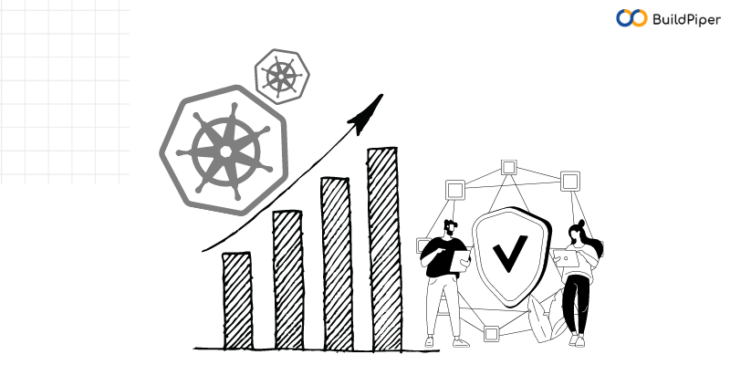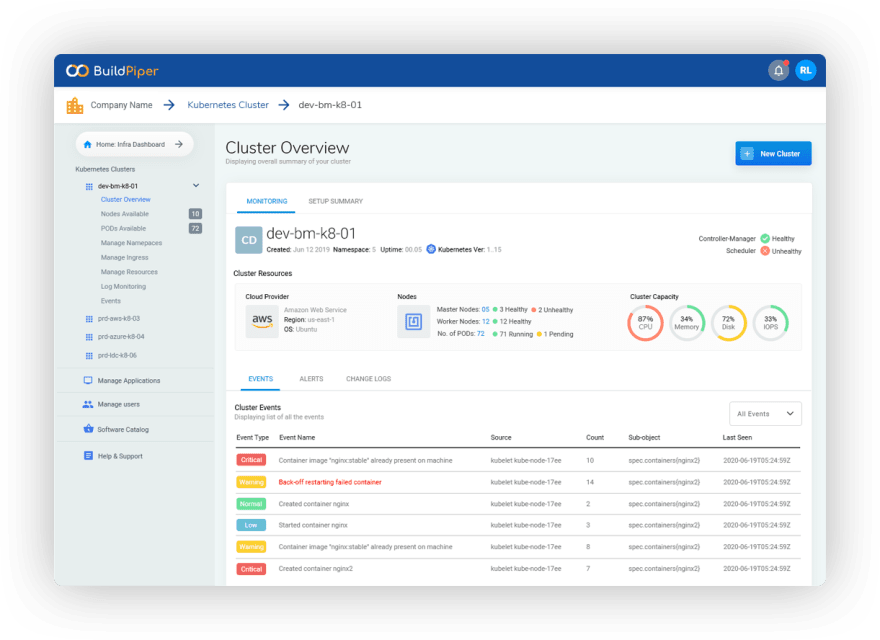
Kubernetes, also known as K8s or Kube, is an open-source platform that facilitates automated deployment, scaling, and management of containerized applications.
According to Stack Overflow Developer Survey 2021, Kubernetes is the third most loved and most wanted platform, with 72.48% positive votes. A whopping 2756 companies are using Kubernetes in the industry today. Some of these include Google, Shopify, and Udemy.
Kubernetes is the one-stop solution for solving container-orchestration problems. Being an open-source system, it offers portability, flexibility, and multi-cloud capability, thereby increasing developer productivity.
Despite the incredible benefits that Kubernetes offer, managing Kubernetes isn’t easy. It has its own set of challenges when it comes to deploying a Kubernetes cluster.
Here we’ll explore the major challenges of deploying Kubernetes and look at how Managed Kubernetes can help resolve these.
Major Kubernetes Deployment Challenges!
Speaking of challenges, Kubernetes is not straightforward, meaning to deploy an application into Kubernetes involves a lot of manual scripts. And this becomes increasingly onerous when there are multiple deployments involved.
Engineering teams can be seen exploring ways to navigate through these complicated and often overwhelming Kubernetes challenges to get the most out of their investments. Some of these include,
-Security Challenges
-Networking Challenges
Security Challenges
There are security challenges as well, commonly known as complex attack vectors. Following a default network policy, the Kubernetes pods can communicate with each other and external endpoints for seamless operation. If one pod gets breached, everything else gets attacked too.
Networking Challenges
There are networking challenges commonly seen are complexity challenges, addressing challenges, and multi-tenancy challenges.
Complexity Challenge
The Complexity challenge is the obstacles faced due to different cloud infra policies while deploying Kubernetes.
Addressing Challenge
The Addressing challenge faced during the use of static IP addresses and ports, as the pods of Kubernetes use an infinite number of IP addresses for one workload.
Multi-tenancy Challenge
Lastly, the Multi-tenancy challenge is the sharing of one Kubernetes environment among multiple workloads.
As you know, you would be facing the challenge of resource sharing and security. The distributed nature of containerized applications makes it difficult to fetch and send updates on the vulnerabilities and risks to the organization.
BuildPiper: An ideal approach for seamless Kubernetes Deployment
With Managed Kubernetes, BuildPiper solves cluster management issues and enables secure and hassle-free cluster creation or onboarding and with its capabilities, help enterprises in mitigating internal & external security threats and security risks within the cloud environment. It provides real-time insights into data and helps in automating compliance and security management.

With best-in-class capabilities for Ingress & Namespace Management, 360-degree cluster view, use of monitoring & log management tools, extensive focus on Cost Optimisations, BuildPiper brings in a holistic and proactive approach to observability spanning infrastructure, environments, data, and applications. It empowers the product and engineering teams to derive value with 10X reduced time & investments required on your Kubernetes & microservices Journey.
Explore its functionalities like Microservices Management, Security, Compliance & Observability and Secure CI/CD Pipelines setup along with Managed Kubernetes for your use cases. Take a demo today!
Buildpiper is an End to End Microservices Delivery Platform.



